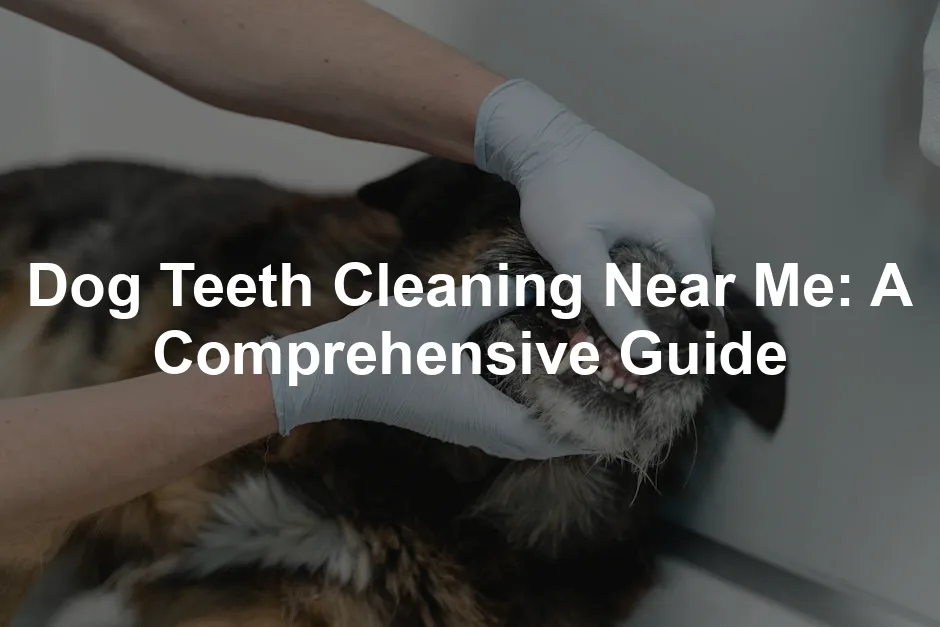Introduction
Dental hygiene is vital for your dog’s overall health. Many pet owners now seek professional teeth cleaning services to ensure their furry friends maintain bright smiles and fresh breath. Regular dog teeth cleaning can prevent serious health issues and improve your pet’s quality of life. Fortunately, local services are becoming more accessible, making it easier than ever to prioritize your dog’s dental care.
Summary and Overview
Why is dog dental health so crucial? According to the American Veterinary Dental Society, 80% of dogs show signs of dental disease by age three. This alarming statistic highlights the importance of proactive dental care. Common dental problems include plaque buildup, gingivitis, and periodontal disease. These issues can lead to pain and severe health problems if left untreated.
There are various teeth cleaning services available. Some options include anesthesia-free methods for anxious dogs, ultrasonic cleaning, and traditional dental cleanings performed under anesthesia. Each method has its benefits and suitability based on your dog’s needs.
To find local services, search online using phrases like “dog teeth cleaning near me.” Look for providers with positive reviews, experienced staff, and safe practices. Your dog’s dental health is essential, so invest time in finding the right care.

To make at-home dental care easier, consider investing in a Dog Toothbrush and Toothpaste Set. This is a game-changer for pet owners who want to maintain their dog’s dental health without the hassle of frequent vet visits. Trust me, your dog’s teeth will thank you!
For a comprehensive understanding of dog teeth cleaning, check out this guide on dog teeth cleaning.
Section 1: Understanding Dog Dental Health
Importance of Dental Hygiene
Keeping your dog’s teeth clean is vital for their overall health. Good dental hygiene can prevent oral disease, which affects many dogs. In fact, the American Veterinary Dental Society reports that 80% of dogs show signs of dental disease by age three. Poor dental care can lead to bacteria entering the bloodstream, potentially causing heart disease and other systemic health issues.
When plaque builds up, it hardens into tartar, leading to gingivitis and, eventually, periodontal disease. This can cause pain and tooth loss for your furry friend. Regular dental check-ups and cleanings are essential for maintaining your dog’s oral health.
Investing in your dog’s dental care can save you from costly vet bills down the line. Schedule a dental check-up for your dog to keep their smile bright and healthy.
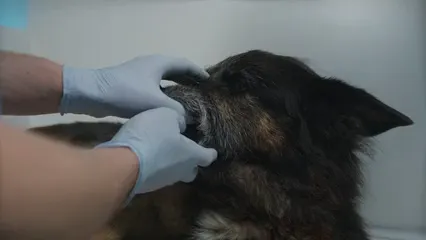
Speaking of dental health, have you ever thought about Pet Dental Chews? They are not just tasty treats; they help in reducing plaque and tartar while keeping your pup entertained. It’s like a two-for-one deal—fun and dental hygiene all in one bite!
Section 2: Signs Your Dog Needs Teeth Cleaning
Recognizing Dental Problems
How can you tell if your dog needs a teeth cleaning? There are several common signs to watch for. Bad breath is often the first indicator of dental issues. You might also notice redness or swelling in their gums, yellow or brown teeth, and excessive drooling.
If your dog avoids chewing or shows discomfort while eating, these could be signs of dental pain. Performing a basic at-home dental check is simple. Gently lift your dog’s lip and examine their teeth and gums. Look for any discoloration or swelling.
It’s alarming to note that by age two, about 80% of dogs show early signs of oral disease. If you notice any of these symptoms, consult your vet. Early intervention can make a significant difference in your dog’s dental health.
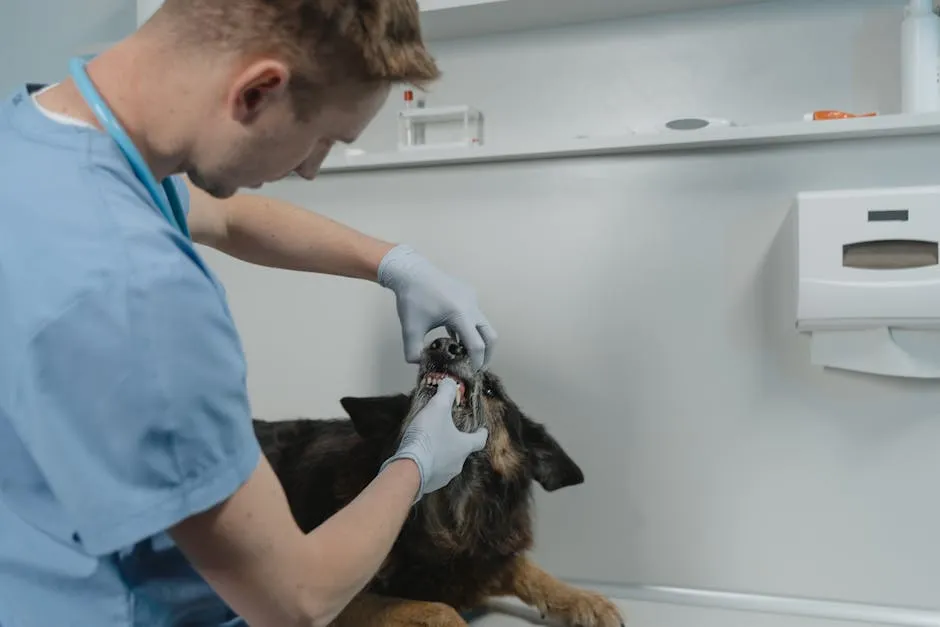
For at-home maintenance, consider using Dog Dental Wipes. They’re a quick and easy way to keep your dog’s teeth clean and fresh, especially when brushing isn’t an option. Just wipe and go!
Section 3: Types of Dog Teeth Cleaning Services
Overview of Cleaning Methods
When it comes to dog teeth cleaning, options vary widely. Professional services typically fall into two categories: anesthesia-based and anesthesia-free methods. The choice between these can significantly impact your dog’s experience and health.
Anesthesia-based cleaning is a traditional method. It allows for comprehensive cleaning but involves putting your dog under sedation. While effective, there are inherent risks with anesthesia, especially for older or health-compromised dogs. On the upside, this method can address severe dental issues thoroughly.
Anesthesia-free cleaning is gaining popularity. This approach allows dogs to remain awake during the process. While it may not reach the same depths as anesthesia-based cleaning, it significantly reduces risks. Many pet owners appreciate the non-invasive nature of this option.
Modern techniques, such as ultrasonic cleaning, are revolutionizing dental care for dogs. This method uses high-frequency sound waves to break up plaque and tartar. The process is quiet and gentle, making it suitable for anxious dogs. Studies show that ultrasonic cleaning can effectively reduce bacteria and improve gum health.
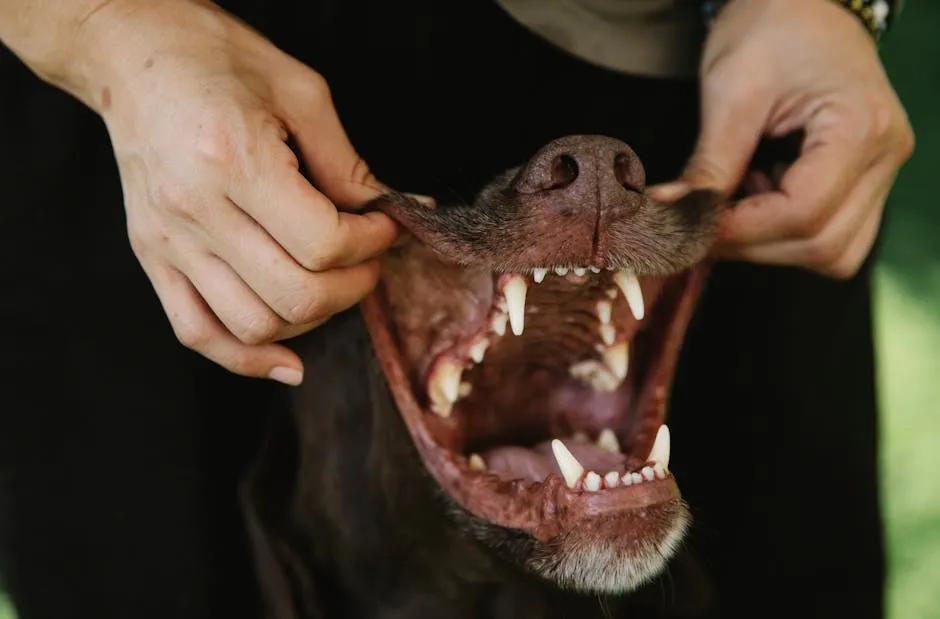
Each method has its pros and cons. Anesthesia-based cleaning is thorough but riskier. Anesthesia-free options are safer for many pets but may require multiple sessions for optimal results.
To determine the best fit for your dog, consider their health, behavior, and your comfort level with each method. Finding a local provider offering your preferred technique is essential for your dog’s dental health.

While you’re at it, why not ensure your pup’s breath stays fresh with a Dog Water Additive for Dental Health? Just add it to their water bowl, and watch those dental issues disappear like magic!
Section 4: Finding Dog Teeth Cleaning Services Near You
How to Search for Local Services
Searching for “dog teeth cleaning near me” can yield numerous options. Start by using online resources to find local services. Websites like Yelp and Google Maps can help you discover nearby providers. Enter relevant keywords to narrow down your choices effectively.
Next, evaluate potential providers. Look for reviews and testimonials from other pet owners. High ratings often indicate quality service and satisfied clients. Make sure to check for certifications, ensuring the staff is qualified and experienced.
Asking your veterinarian for recommendations can also be beneficial. They often have insights into trustworthy local services that specialize in dog dental care.
Consider the services offered, such as anesthesia-free options or ultrasonic cleaning. This can help you find a provider that matches your pet’s needs. Remember, your dog’s dental health is paramount, so take the time to research thoroughly.

And while you’re at it, don’t forget about your dog’s overall well-being. A Pet First Aid Kit can be a lifesaver in emergencies, ensuring you’re prepared for anything that comes your way!
Section 5: What to Expect During a Teeth Cleaning Appointment
Appointment Process
When you book a dog teeth cleaning appointment, you can expect a structured experience. Initially, the vet or technician will conduct a consultation to assess your dog’s dental health. They’ll ask about any dental issues you’ve noticed, such as bad breath or gum swelling.
The cleaning process typically lasts about 60 minutes. First, they’ll check for plaque and tartar buildup. If your dog requires anesthesia-free cleaning, the technician will use gentle techniques to remove debris without sedation. This method is less stressful for many pups.
For anesthesia-based cleanings, your dog will be sedated. This allows for a thorough examination and cleaning. The vet will carefully remove plaque and tartar using specialized instruments. It’s important to know that both methods aim to improve your dog’s oral hygiene.

After the cleaning, you’ll receive instructions on follow-up care. This often includes recommendations for at-home dental hygiene routines. Many pet owners worry about the safety of anesthesia. It’s crucial to discuss your concerns with the vet beforehand.
Understanding the appointment’s structure can ease your mind. Regular cleanings can lead to healthier teeth and gums for your furry friend. Book an appointment today for your dog’s dental health!
Section 6: At-Home Dental Care Tips
Maintaining Dog Dental Hygiene
Maintaining your dog’s dental hygiene at home is essential. Regular brushing is the most effective way to keep their teeth clean. Aim to brush your dog’s teeth at least two to three times a week. Use a toothbrush designed for pets and a vet-approved toothpaste.
Incorporating dental treats into your dog’s routine can also help. Look for treats that promote dental health and reduce plaque. Chew toys are another great option. They can effectively remove food particles and massaging the gums during play.
Don’t forget the importance of regular veterinary check-ups. These appointments allow for professional cleanings and examinations. Your vet can provide tailored advice on maintaining your dog’s oral health.
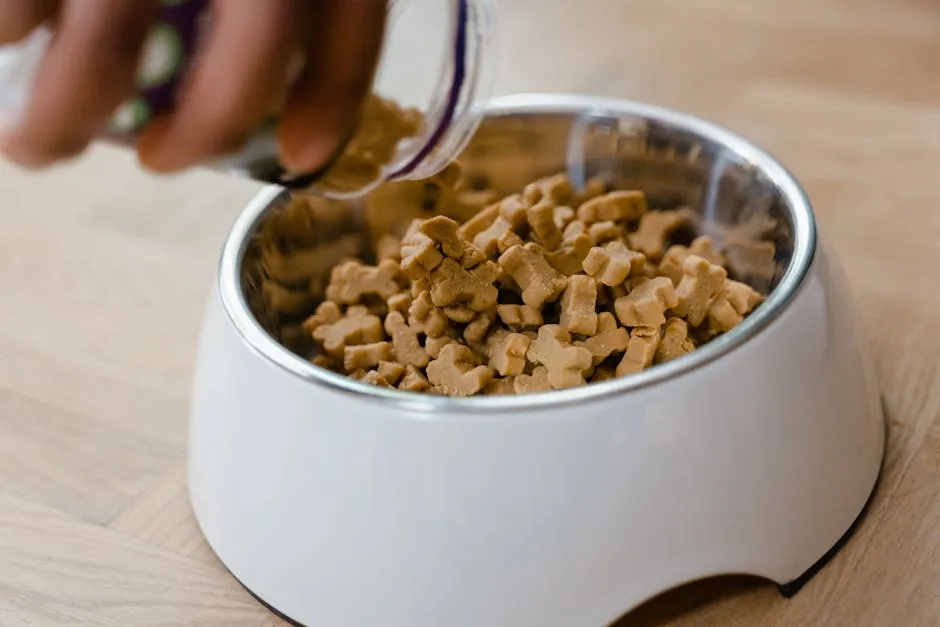
Incorporate daily dental care into your dog’s routine. This proactive approach can prevent serious dental issues down the line. Keeping your dog’s teeth in great shape benefits their overall health!
To make things even easier, consider adding a Dog Dental Treats for Fresh Breath into their diet. Not only do they love the taste, but you’ll love the fresh breath that follows!
Section 7: Cost of Dog Teeth Cleaning Services
Understanding Pricing Structures
When considering professional dog teeth cleaning, understanding the costs is essential. Typically, you can expect to pay between $50 to $300 for a session. The price often depends on the method used and the severity of the dental issues.
Anesthesia-based cleanings usually cost more, often ranging from $150 to $300. This method allows for thorough cleaning but involves sedation. On the other hand, anesthesia-free options are generally more affordable, costing around $50 to $150. These sessions may require multiple visits for optimal results depending on your dog’s dental condition.

Budgeting for dental care is crucial. Regular cleanings can prevent costly vet bills later. Many providers offer package deals, allowing you to save money over time. Always inquire about quotes from local dental care providers to find the best fit for your budget and your dog’s needs.
And while you’re at it, don’t forget the importance of having the right tools at home! A Dog Nail Clipper is essential for keeping your pup’s nails trimmed and healthy, which is just as important as their dental care!
FAQs About Dog Teeth Cleaning
Common Questions Answered
What are the benefits of professional teeth cleaning for dogs?
Professional cleanings help remove plaque and tartar, improving your dog’s breath and overall oral health.
How often should I clean my dog’s teeth?
Aim for professional cleanings every six to twelve months, depending on your dog’s dental health.
Are anesthesia-free cleanings safe for all dogs?
While generally safe, some dogs may require anesthesia based on their health and temperament. Always consult your vet.
What should I look for in a dog dental care provider?
Check for qualifications, experience, and reviews from other pet owners. Ensure they use safe, effective methods.
How do I know if my dog is a good candidate for teeth cleaning?
Consult your vet to assess your dog’s dental health and determine the best cleaning option.
Please let us know what you think about our content by leaving a comment down below!
Thank you for reading till here 🙂
All images from Pexels

